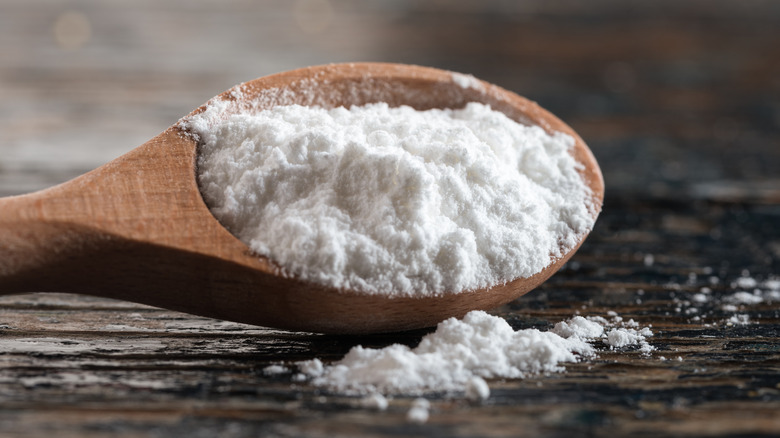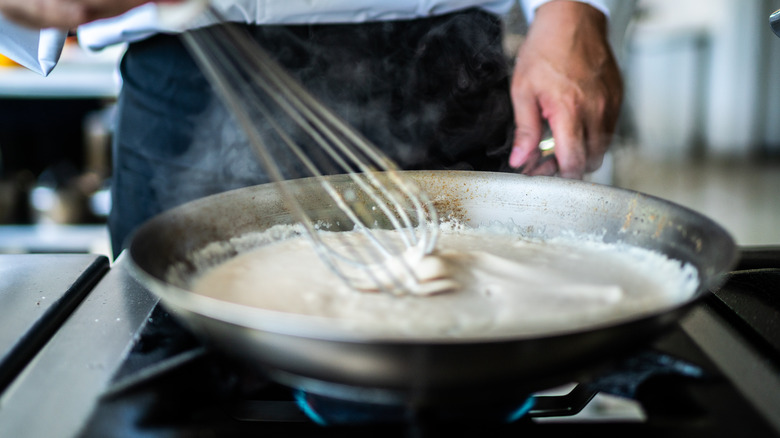The Mistake To Avoid After Thickening Sauce With Cornstarch
If you've ever made sweet and sticky sesame chicken or Kung Pao shrimp stir fry at home, you probably know that adding a little cornstarch into your recipe is the key to a thick, deliciously goopy sauce. While you can use other ingredients to accomplish this, like flour, cornstarch can thicken liquid twice as much, so it's a more efficient way to get the result you want. The process is usually pretty simple: You'll whisk the cornstarch into the rest of the sauce's ingredients, and watch as it thickens before your eyes in a hot pan. But although it's tempting to let your sauce continue cooking to achieve maximum goopiness, it's crucial to stop boiling it right after it thickens.
It's true that you need to boil cornstarch for a minute or two to get the starches to gelatinize — aka, to get the starch molecules big enough to absorb water, which is how the sauce thickens. However, if you keep boiling it after this occurs, the starch will start to disintegrate, and your sauce will wither back down to its original thin consistency. Plus, you'll want to start removing heat right away because as your sauce cools down, cornstarch will set and cement that gel-like texture even more.
Turn down the heat after your sauce reaches a boil
So how can you ensure you don't make the mistake of letting your cornstarch cook at high temperatures for too long? To stay on the safe side, turn the heat down to below a simmer as soon as your sauce boils. Your stove and pan temperature will likely take a minute or two to cool down anyway, so there should be adequate time for thickening to occur. Also, once you turn the heat down, avoid stirring your mixture — you'll likely interfere with the starch molecules absorbing water and may prevent your sauce from thickening.
Another option is to add cornstarch toward the end of cooking your dish. This way, you can pull it off the stovetop if necessary (or if your electric stove's temperature doesn't lower fast enough). In some stir-fries, for example, the ingredients are cooked first, and the sauce is thrown in at the end for a quick toss. Typically, the instructions say to only cook for a minute or two after the sauce is added — perfect timing for the cornstarch to thicken, but not so long that it will thin out again.

